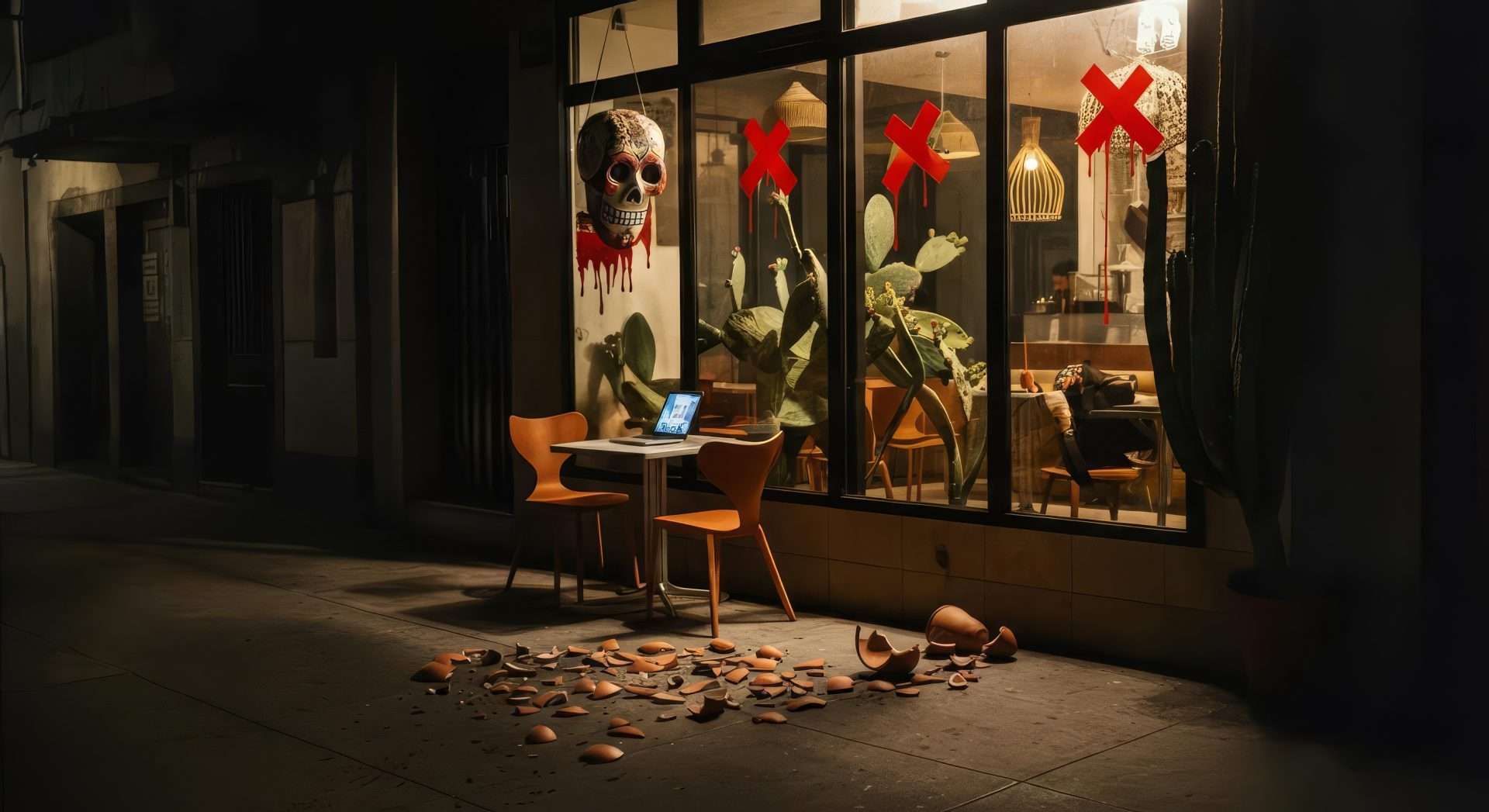This Was Never About Housing

“Sacrifice a gringo,” “Mexico for the Mexicans,” “Gentrification = Colonization,” “Gringo Go Home”—these were some of the slogans used in a recent demonstration against gentrification in Mexico City. What began as a peaceful protest escalated when demonstrators smashed windows and doors of stores and cafés in Roma and Condesa, trendy neighborhoods among foreigners. One video captured protesters harassing a group of non-locals, with one of them chanting, “Mátenlo! Mátenlo!” (“Kill him! Kill him!”). The protest has been compared to recent ones in Italy, Portugal, and Spain. At least ten activist organizations were involved, including the Frente Anti Gentrificación CDMX, a left-wing, Marxist Communist group advocating resistance against “the territorial and cultural whitewashing of Mexico.”
The demonstration targeted gentrification, a sociological term that has moved into general use since the mid-’70s. Originally attributed to British sociologist Ruth Glass, it is defined as a neighborhood transformation in which wealthier people move into a previously downmarket area. The area experiences rising property values and rents, the renovation or replacement of older housing and infrastructure, and the displacement of lower-income residents.
Gentrification has cultural, historical, legal, ethical, and social dimensions. At its core, it is an economic phenomenon. And a fairly straightforward one: as demand increases for housing in attractive, dynamic, and safe neighborhoods, so do average rents. With the entrance of more affluent residents, local business owners respond to new incentives and offer goods and services catering to the new arrivals, almost always increasing prices (and sometimes even increasing quality). Due to the inelastic nature of housing supply and regulations that hinder the expansion of available housing, market prices rise in ways that can seem “excessive” to the public. Restrictive regulations and bureaucratization of the housing market, such as the lengthy and costly legal processes for lease disputes, tax structures that discourage investment in rental housing, and strict density restrictions, prevent agile increase in housing supply. With supply constrained, higher rents are not surprising. Tenants who cannot keep up with the prices have to look for housing somewhere else. Anger at gentrification is intensified when the “gentrifiers” are coming from other parts of the world.
Since the COVID-19 pandemic in 2020, average rent in Mexico City has increased by an estimated 45%, while prices in the most attractive neighborhoods (the main targets of last week’s protest) have since surged by around 80%. These areas have seen a growing influx of foreign digital nomads, mostly from the United States, Canada, and other high-income countries. The cultural landscape has shifted: dollarized restaurants with menus in English, tourists flooding the streets at night, and even rumors that the salsas at the taco stands are not as spicy as they used to be.
To make sense of gentrification as a layered economic, cultural, and social process in Mexico City, I spoke with Dr. Víctor Isolino Doval, a professor at Universidad Panamericana and a member of Mexico’s National System of Researchers. A scholar of philosophy and urbanism, Dr. Doval leads a research group dedicated to exploring the relationship between city life, beauty, and livability.
“I believe what happened in Roma-Condesa doesn’t really have much to do with gentrification in the urban sense…” Dr. Doval said. “We can concede that the protest began as a demonstration against gentrification as an urban phenomenon, but other groups joined opposing what they perceived as a North American invasion, against the digital nomads driving up local prices, and then it turned into a protest against capitalism, and then into one in favor of Palestine… it got out of control.”
“Gentrification is a completely normal process. Jane Jacobs explained how a city is like an ever-changing living organism: some parts are alive and well, others change, others die off if not taken care of…” Dr. Doval told me. “I think [the concept of gentrification] has been hijacked by a certain ideology. The phenomenon is being demonized.”
When I asked Dr. Doval whether the protest was really about discomfort with cultural changes rather than housing policy, he responded that “there is a housing challenge,” but added that “if someone wants to live in a certain part of the city, they must pay what the area costs, just like in any part of the world. That’s how markets work.” His point was that highly desirable neighborhoods will always come with higher prices. That isn’t unique to Mexico City or the result of foreign arrivals; it’s a basic feature of supply and demand.
One of the main enemies portrayed in the protest (along with “capitalism” and greedy landowners) was the so-called laptop class, “digital nomad gringo.” Remotely employed Americans were accused of being the main force behind gentrification.
I interviewed Germán Saucedo, a Mexico City native and junior editor at First Things, who published an in-depth report on digital nomads. “Roma and Condesa became trendy and expensive even before 2020,” Germán explained. “It’s not really about housing. That is just an excuse… it’s about (and maybe this is not the right term), a cultural gentrification.” Germán emphasized that while working on his 2023 report, he noticed vast cultural differences across categories of foreigners living in Mexico City. “Some of them are not expats or permanent residents… they are more like long-term tourists that, granted, are not looking to fully adapt to the local culture.” He insisted that gentrification is not exactly the problem, since “throughout history, many areas have been gentrified in Mexico City: Polanco, Doctores, Santa Fe… but now the ‘gentrifier’ is the gringo, so the discontent with income inequality is paired with a cultural resentment.” Drastic changes in neighborhood demographics driven by wealthier Mexicans did not cause backlash like last week’s protest. But now, with foreigners so visibly involved, gentrification serves as a symbol for broader social and cultural tensions.
Mexico City’s anti-gentrification protest was just superficially about housing. The protest expressed a deeper and more complex malaise, one that has been explored, at times controversially so, by writers such as Samuel Ramos in El perfil del hombre (1934) and Octavio Paz in El Laberinto de la Soledad (1950).
Dr. Doval summarized it best: “a Mexican ethos moved by a spirit of revenge.”
The post This Was Never About Housing was first published by the Foundation for Economic Education, and is republished here with permission. Please support their efforts.



